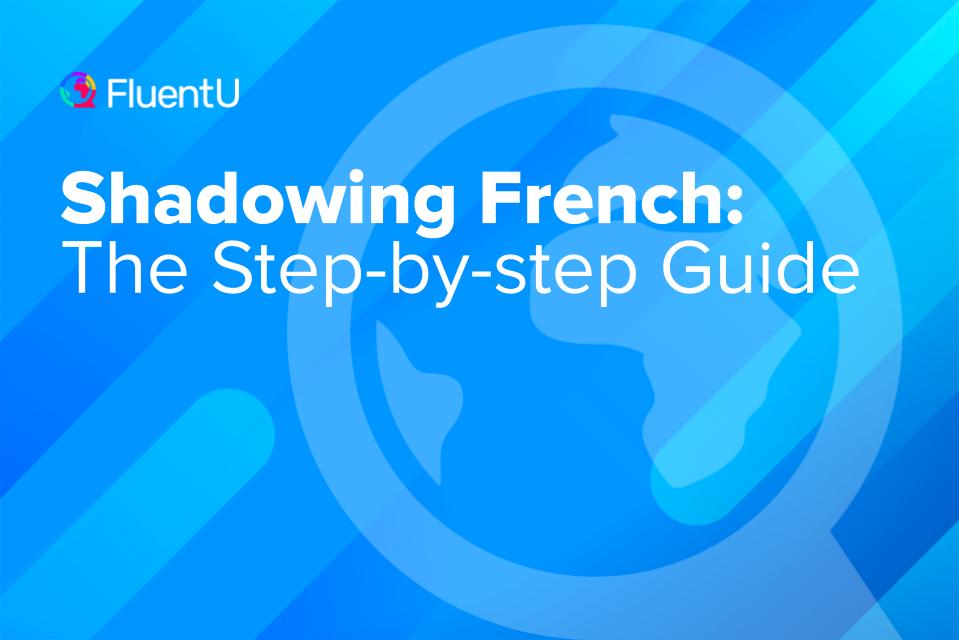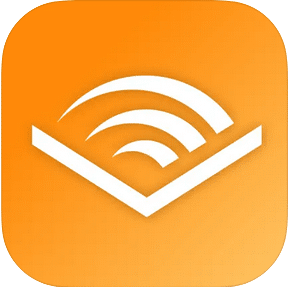Shadowing French: The Step-by-step Guide

Native-sounding French doesn’t just magically happen. It takes lots of practice to listen to and imitate real French speech.
With a language learning method called shadowing, you’ll be practicing authentic-sounding French from the get-go. We’ll walk you through the steps to shadowing French and share eight resources that’ll help you shadow like a pro.
Download: This blog post is available as a convenient and portable PDF that you can take anywhere. Click here to get a copy. (Download)
The Benefits of Language Shadowing
Although others have used similar techniques, shadowing (as defined by Dr. Alexander Arguelles) is probably the most recognized method. Arguelles is a renowned polyglot, linguist and teacher.
Shadowing has certain distinct advantages:
- It mimics some of our innate language learning processes and allows us to better internalize the cadences of native speakers. As you’ll see below, shadowing involves mimicking or “parroting” real French speech, which is similar to how you learned your native language as a child. The technical term for this process is echolalia.
- It helps you develop native-sounding speech from the beginning. When you start shadowing French, you may not be able to catch all the nuances of the speaker’s pronunciation. However, you can grasp some of the more difficult aspects of sounding like a native, such as rhythm and intonation. This video explains the process in more detail:
Once you’ve shadowed the same source material a few times, reproducing the native speaker’s intonation and rhythm should become second nature to you. At that point, you can try to pay more conscious attention to the pronunciation of the words.
How to Shadow French: The Basics
1. Repeat What You Hear Immediately
To give you an idea of how this works, Dr. Arguelles himself demonstrates in this YouTube video:
The goal is to internalize the French syllables as they really sound. If you pause or overthink it, you’ll end up substituting more recognizable sounds that you already use in your native language. The technical term for these incorrect pronunciations is “eggcorns.”
That’s where we get mispronunciations like “boo-koo” for the French word beaucoup (many, a lot), as in the phrase “boo koo bucks.”
Also, don’t mumble when you shadow French. Speak clearly and deliberately, as though every word you’re saying is of the utmost importance.
2. Walk While You Talk (Preferably Outdoors)
Dr. Arguelles recommends walking at a brisk pace while shadowing. Ideally, this should be done in an area with lots of greenery.
When you walk in natural surroundings, you can enjoy these scientifically-backed benefits:
- Better performance on a memory test than those who took a walk in a city (i.e., an area that doesn’t have much in the way of natural scenery)
- Restored mental concentration
- Renewed mental energy
- Improved mental clarity and cognitive ability
Of course, you should also make sure that wherever you’re walking is safe. The last thing you want is to have an accident because you’re so engrossed in whatever you’re doing that you forgot to be aware of your surroundings.
3. Hold Your Head High
Better posture improves oxygen flow to the brain, and may even boost your mood and confidence levels. This can make you feel more positive when doing something challenging like learning a language.
4. Add the Text
After “blind shadowing” the same material several times—that is, repeating what you hear without any written transcript—you might start to look at the corresponding text as you listen and rapidly repeat. In this way, you can start to clear up any word meanings that are unclear.
Podcasts for Shadowing Everyday French
For contemporary, everyday French language and culture, it’s hard to beat podcasts.
In particular, the ones listed below will provide plenty of high-quality shadowing material, accompanied by additional learning tools like transcripts and flashcards.
News in Slow French
True to its name, this podcast presents current news items in a slow and deliberate manner. All of the elements of rhythm and intonation are still intact, but the pace lags behind normal conversational speed. As you progress and become more confident in your speaking, you can change the playback speed from slow (0.5) to normal (1.0).
Each episode’s resources include:
- Online/downloadable PDF transcript for the news, grammar and idiomatic expressions segments
- Flashcards
Unlike some of the other shadowing resources, News in Slow French requires a subscription. Subscription levels are tiered, so you can decide which features work for you according to their price points.
One Thing in a French Day
Get a personal perspective on French culture through the everyday family life of Laetitia, a Frenchwoman who lives near Paris.
Episodes are only about five minutes long. There are several years’ worth of episodes to download, so you won’t run out anytime soon.
Listening to this podcast is like listening to a letter from a friend. You can imitate a regular person who happens to be a French speaker—not a news presenter, actor or celebrity.
If you’d like a written guide for your shadowing, you can get transcripts of new episodes here. Although the podcast episodes are free, the transcripts require you to shell out a handful of dollars per month, depending on whether you’d like your transcripts with or without notes.
Français Authentique (Authentic French)
This podcast covers everything from French idiomatic expressions to suggestions for stress management and personal development.
These episodes are accompanied by a full transcript, which is perfect for when you move past the “blind shadowing” phase to shadowing with the text of the audio at hand. Both the written transcript and the audio are downloadable as a PDF and an MP3, respectively.
There are dozens of episodes available for free on the website. You can also access them via Apple Podcasts, Spotify and Soundcloud.
Learn French by Podcast
Like “News in Slow French,” this podcast is exactly what it sounds like.
Each episode covers a specific topic that uses new vocabulary listed in the show notes, complete with translations. The episodes are typically around 15 minutes long (which, incidentally, is the recommended duration for shadowing sessions according to Dr. Arguelles).
No matter where you are in your French, you’re bound to find an episode and/or topic that you’ll enjoy on here.
Videos for Conversational and Authentic French Shadowing
You can play these videos through your smartphone or tablet. During the initial phase of shadowing, all you’ll need is the audio component.
Later on, when you’re ready to add visual aids, just start watching. The written resources you’ll need to facilitate your repetition and deepen your understanding will be right before your very eyes.
Compréhension Orale (Oral Comprehension)
With rapid conversations and multiple speakers, the compréhension orale channel is well-suited for intermediate students looking for varied material to shadow French.
The dialogues are transcribed on the videos themselves. You can work your way through a composite video with hours of conversation, such as the one above, or make your own playlist of some of their shorter videos.
FluentU
With quick video clips such as movie trailers, music videos, news segments and comedy sketches, the FluentU language program offers tons of opportunities for shadowing authentic French as heard in the media.
Each media clip is paired with dual-language interactive subtitles, which you can hover over to pause the video and repeat after the native speaker. If there’s a certain word in the subtitles that you don’t recognize, you can click on it to view usage examples or add it to a personal flashcard deck.
Since these videos are short, you can shadow as many French media clips as your study session permits.
Audiobooks for Shadowing French with a Story
Maybe you’d love to start shadowing, but you’d already promised yourself you’d read two French books every month—and you barely even have time to do that.
Why not combine your reading and listening activities by using French audiobooks for shadowing?
LibriVox
Feel free to take advantage of the French literary classics brought to you by the volunteers at LibriVox.
LibriVox displays each book’s chapters in a handy table, where you can easily see the run time for each one—which makes putting together shadowing playlists a snap!
Download the entire audiobook in M4B format (playable on iTunes, Windows Media Player and more) or download the MP3 files chapter-by-chapter.
If you check out the link on the left side of the page, you may be able to see one that leads to the written version of the text—perfect for when you’re ready to read along with the original as you shadow.
Audible
Amazon’s Audible service has more contemporary offerings than LibriVox, so you can use it to shadow more modern French.
If there are particularly tricky sections of the Audible book you’d like to flag as you’re shadowing, you can do so with a simple press of the bookmark icon. This way, you can easily locate difficult passages later on for extra repetition and review.
And speaking of reviews, each audiobook’s product page on Audible lets you see ratings from other customers. Specifically, you can see how your fellow Francophone listeners liked the performance of the narrator, and get an idea of how easy a given audiobook might be to shadow. Is the narration clear and understandable? Their comments will let you know if the narrator races through like Alain Prost or suffers from a bad case of the mumbles.
Unlike LibriVox, Audible is a paid service. If you’re not ready to commit to a full-blown membership yet, give it a whirl with a free, month-long trial.
When you’re ready to start reading the original text while you shadow, simply search for the matching e-book, paperback or hardback version on Amazon’s main site. You can also find the English version to help you better understand what you’re hearing in French.
So don’t be shy—stand up straight, put one foot in front of the other and confidently walk on the road to fluency with these stunningly good shadowing French resources.
Download: This blog post is available as a convenient and portable PDF that you can take anywhere. Click here to get a copy. (Download)














